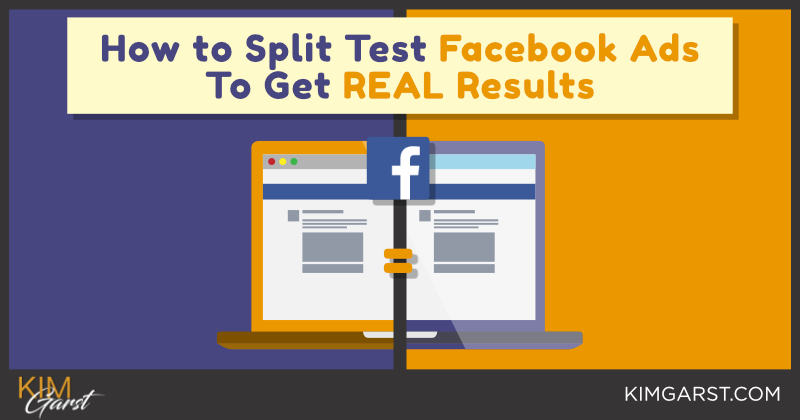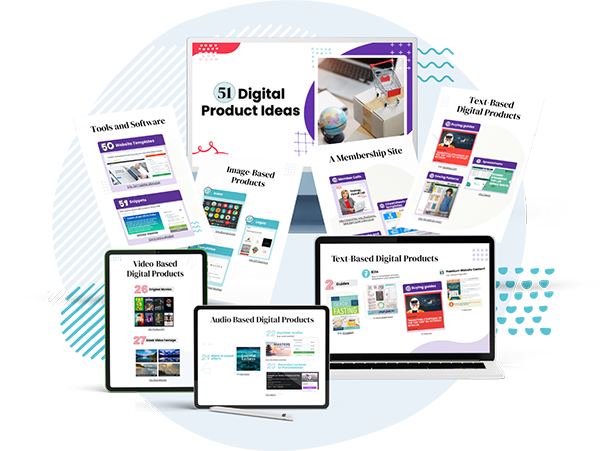Split testing is an important strategy for all areas of your web marketing. It allows you to test two variations of something – like your website, email or ad copy – to see which performs better. Also known as A/B testing, split testing can result in increased clicks, downloads, signups or purchases. And ultimately, this can mean less money spent on advertising, and an increased ROI.
Although some marketers assume all that is needed to create amazing copy is an in-depth knowledge of their audience, this is often not enough. This is particularly true with Facebook ads. Common sense and insight into your audience are great, but often aren't enough to help you achieve optimal results from your ads.
Following are some strategies you should try the next time you run ads on Facebook to help you achieve the best results!
1. Change only one variable of your ad copy.
As with all forms of split testing, it’s critical that you only test one variable at a time. For your Facebook ads, this means testing and comparing ads that are identical – save for one element. Elements you can test include:
- Your ad image: Did you know that photos of happy, smiling women often perform best on Facebook? Other options include images with a call to action, a surprising or odd image, an eye-catching product shot, or your logo (this works best when your logo is already known to the user).
- Your headline: Remember to keep your ad copy – including your headline – focused on capturing the attention of your audience. Some ideas to grab attention include keeping your headlines simple, asking questions, focusing on using action words rather than nouns and making the benefits of your product or offer obvious.
- Your ad copy: Your ad copy and call to action should clearly articulate what will happen when people click on your ad: for instance, click to download, get a discount or find out more. Using tactile phrases like ‘grab yours’, ‘claim your copy’, or ‘swipe this file’ often work well, so be sure to try different variations for your CTA.
2. Change only one variable of your target audience.
Facebook provides marketers with reams of different targeting options (like location, interests, age, relationship status, etc.). While this is obviously extremely beneficial for advertisers, it also makes split testing a little more time-consuming. Be sure to keep your ad image and copy consistent when testing out different targeting options for optimal test results.
You may also want to test out various combinations of ads and targeting criteria: for instance, keeping everything the same, except for your image and one targeting element. An example may be changing your ad image to a smiling senior citizen when targeting those over the age of 65.
3. Use one ad per ad set.
One of the biggest challenges with split testing Facebook ads is that Facebook determines very early on in your advertising which of your ads is performing the best. This usually isn’t an issue, however it can make testing multiple ads at the same time somewhat ineffective; this is because Facebook will often give the lion’s share of impressions to your best performing ad (at least in terms of clicks), and stop showing your lower-performing ads.
The folks at Marketer’s Brain Trust suggest some workarounds you can try using to avoid this problem:
- Place one ad per ad set, rather than 3-4 per campaign as Facebook suggests. Run the ads one after the other, rather than all at the same time.
- Try running ads for only 1-2 days. As ads tend to receive more impressions in the first couple of days, try running your ad for up to 2 days, and then pause it. Weeks later, you can try running them again for a couple of days to receive another set of impressions.
- Run ad sets against each other: While this will certainly drive up your costs (as you’re essentially competing against yourself), it will give you the most accurate idea of which ads are most effective. Then you can continue to show the most effective ad, knowing with confidence you’ll achieve the best results from it.
Split testing your Facebook ads can lower your costs, increase your clicks and conversions, and ultimately improve your ROI. The most important thing to remember is to keep everything the same, except for the one element you want to test. There’s no need to stress over running the ‘perfect’ split test either…better to run a slightly imperfect test than not to test at all.
For more guidance on using Facebook ads to promote your business, see my post How to Create Facebook Ads That Really Grow Your Business.
Do you split test your Facebook ads? If so, has it made a difference for you in terms of cost, clicks or conversions? Share below!
About Author
Kim Garst
Kim Garst is a renowned marketing strategist and speaker who is trailblazing the use of artificial intelligence in digital marketing. With over 30 years of experience as an online entrepreneur, Kim helps entrepreneurs grow their business and authority online by using AI technology. She is leading the way with proven AI frameworks that help entrepreneurs build authority in their space.
She is keynote speaker and an international best-selling author of Will The Real You Please Stand Up, Show Up, Be Authentic and Prosper in Social Media.
Named by Forbes as a Top 10 Social Media Power Influencer, Kim is well-known for her skill to simplify complex technology and make the use of AI understandable for business growth. Her relatable, actionable advice helps guide new entrepreneurs to harness the power of AI to succeed in digital marketing. Kim is leading the way in combining human and technological skills to create a new model for AI-powered marketing.



2 thoughts on “How to Split Test Facebook Ads To Get REAL Results”
JJ Wong,
Split testing ads is a great practice. You can often find a small tweak makes the big difference. – Boom Care Squad – Aida Ingram
John, it’s not always impressions…it’s all about your end goal. You need to measure the conversions around what you want from the ad. That’s how you choose your “winner”.